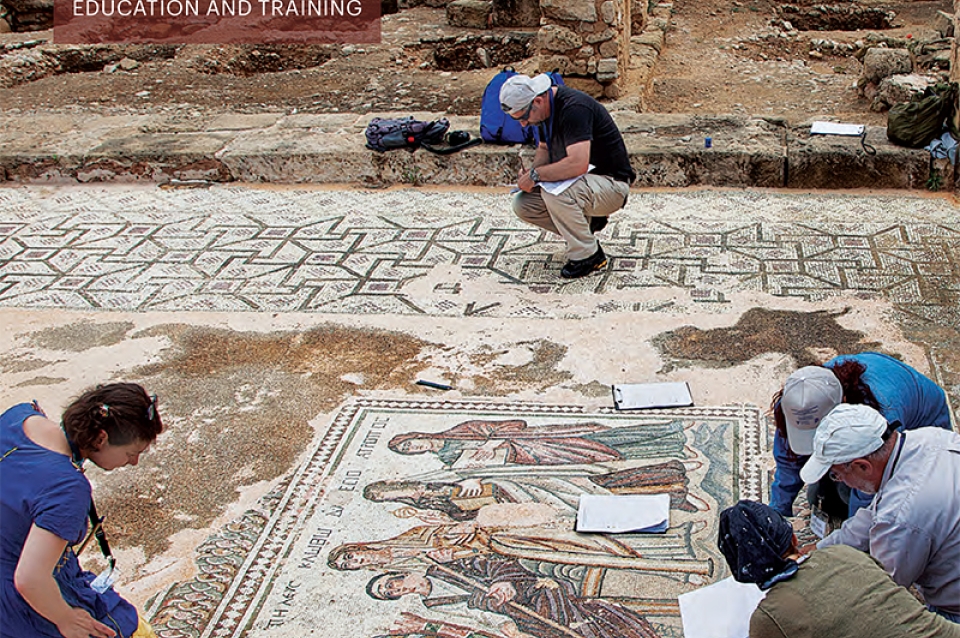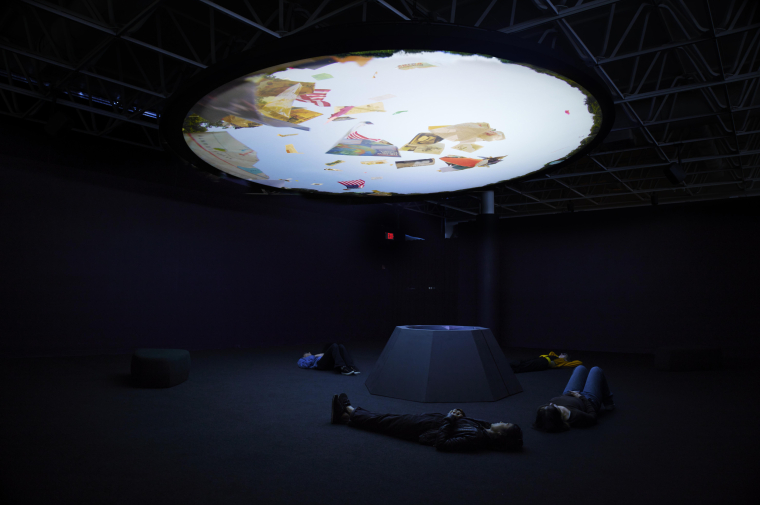January 15, 2021
Stuart Weitzman School of Design
102 Meyerson Hall
210 South 34th Street
Philadelphia, PA 19104
Get the latest Weitzman news in your Inbox
Media Contact
Michael Grant
mrgrant@design.upenn.edu
215.898.2539
Recently, the Getty Conservation Center convened a panel for a virtual conversation on built heritage conservation education and training. Frank Matero, professor and chair of the Graduate Program in Historic Preservation at Weitzman, and director of the Center for Architectural Conservation, spoke with Tony Barton, chair of Donald Insall Associates in the United Kingdom; Jigna Desai, associate professor, CEPT, chair for the master’s program in Conservation and Regeneration in the Faculty of Architecture, University in India, and executive director, Center for Heritage Conservation; Jeff Cody, senior project specialist, Getty Conservation Institute; and Jeffrey Levin, editor, Conservation Perspectives, The GCI Newsletter. Their conversation, exccerpted here, can be found in full on the GCI website.
Excerpt from “Theory, Practice, and Standards: A Conversation about Built Heritage Conservation Education and Training,” published in Conservation Perspectives: The GCI Newsletter, Fall 2020.
Jeff Cody: Recently, many have noticed a widely expanding notion of what constitutes “heritage,” making it even more challenging to achieve some of the objectives we’re discussing. The broadening of the definition of heritage has implications not just for urban planning and landscape architecture but also for tourism management, anthropology, and other disciplines that presume to be engaged in what’s commonly called “heritage management.” That term has multiple connotations, don’t you think?
Tony Barton: We may have something here dividing us by a common language. What is heritage management in the United States?
Cody: It depends. There are probably about a hundred US programs with diplomas or certificates that give some sort of qualiication that is not universally recognized. Someone involved in tourism can assert they understand something about heritage, and they might market themselves as being a heritage manager or a heritage specialist. This is a global trend. In Southeast Asia, where I’ve worked more extensively than in the United States, there’s a proliferation of tourism management programs.
Jigna Desai: In India there are over four hundred programs in architecture, but fewer than ten programs offering a master’s in conservation. And there is only one degree program in heritage management, and a dozen undergraduate and postgraduate programs in archaeology. A handful of institutions offer degrees in museology and arts conservation, with few opportunities for doctoral studies in the area. These programs provide a “space” where the learners gain a holistic understanding of the domain, along with the methods needed to practice the expertise. They also push boundaries of knowledge. Fewer programs lead to a situation where there are few full-time conservation practices in the country. Educators, trainers, researchers, and reflective practitioners are few. There are numerous online short certificate courses—some offered by organizations, some by institutions. Very few are aimed at professionals with a view toward continuous education. Individuals who take these courses could be coming from any background, and because of the lack of regulations in the field they end up as “heritage practitioners.” Heritage conservation being a multidisciplinary field, this exposure that individuals get to it is extremely important for the practice. I think there is value in having, say, anthropologists do a short course to know more about heritage, but they are primarily involved on sites as anthropologists. Economists may do a short certificate course, but their primary role is that of economist. If there aren’t enough institutions offering programs that address important conservation issues, the practice of conservation in the country—which is likely to increase—will suffer.
Barton: Does the Indian government manage standards for conservation professionals?
Desai: We recently had guidelines from the National Monuments Authority that outline standards for practice, but, unfortunately, we don’t have any implementation measures and monitoring processes in place. Appointments in the public sector are getting formalized, but the regulation is quite loose regarding who can privately practice conservation.
Matero: It’s not an accident that the word “heritage” has arisen as the common way to talk about this collective inheritance. But “heritage” is a constructed thing. Its values are derived from those in a position to attach significance to a place or a thing. Years ago, the GCI pioneered this with its values-based projects that looked at conservation and management plans, in part as a way of leveling the playing field so that one set of values or interest group didn’t dictate the entirety of what that heritage meant. I work predominantly in the Southwest on Native American ancestral archaeological sites, where the theories and methods of conservation were largely dictated by archaeologists early on. I’m always amazed how these structures aren’t seen or managed as standing architecture or cultural landscapes. And when you get into stakeholder concerns, issues of what is to be preserved and how cannot be answered by one discipline or stakeholder group alone. The whole idea of management was to get more people at the table to talk about the many values of heritage and then to make informed decisions about what to do and how to do it by those with professional expertise. Now, at this point, anyone without previous training can write a conservation management plan because there aren’t identified standards for qualifications to do that. A clear set of knowledge and skills should be required to work on heritage sites, no matter how you define them. So it comes back to education—but the problem is that we don’t have enough practical experience formally included in academic trainng, such as a field project year, because of a lack of fiscal support.
Jeffrey Levin: How do we strike a balance between the theoretical underpinnings of the practice with the practical hands-on training that deals with materiality?
Barton: A conservation management plan is something we at Insall do for every job we have, and this is exactly what we train our staff to do. We need to understand what’s special about a building. What makes it tick? What does it mean to the neighbors? You read the building, you get its history, and you see where it sits in the historical context. You go into the building and take a look at the way it’s been messed around. And then you start to understand its significance. We’re about changing buildings, but we’re creative conservationists. We’ll change buildings while maintaining their significance and adding another layer of significance in a beautiful and relevant way. We have listed buildings in the UK, and a conservation management plan approach demonstrates to the authorities that what’s being proposed follows the grain of the building. We have to take that academic side—which is great fun, by the way, and we all enjoy it—but you can’t ask somebody fresh with a PhD to come up with a proper conservation management plan. Conservation management plans have to guide change, and it’s a leap from the academic conservation management plan to actually coming up with creative proposals to maintain a building’s significance. That’s at the heart of our conservation training program.
Levin: Jigna, how do you handle that balance between the theoretical and the practical?
Desai: Well, this is where the lack of regulations actually helps. We use it to our advantage. In India, designated heritage sites are often contested in terms of ownership or in terms of the value they have, which religion or community they belong to, and what their history is. Fortunately, or unfortunately, we often find no re- cords, or the records are contested. Sometimes the contesting par- ties both have records they have had made. And some sites may be abandoned. Because of the lack of regulations, if a site is abandoned and nobody is using it, we’re actually able to occupy it with the consent of neighbors, or of the one person who claims owner- ship or custodianship of it. We occupy it for a year or so for educational purposes and study processes of conservation through the site. Through our Center for Heritage Conservation, we’re planning to formalize this process and turn it into a conservation site school. We’re able not only to look into the technological aspects of materials and structure, but also to do stakeholder meetings to understand how value is constructed around that contested site. For example, there’s one abandoned site that was supposed to be- long to a particular religious community, and the religious head gave us the permission to occupy it. The discussions on the site included the traditional philosophy of conservation, and how it did—or did not—reconcile with the accepted World Heritage approach. Along with this, through our theory courses, we constantly bring in theory and best practices from around the world.
Matero: Tony and Jigna, what you’re both talking about is the difference between critical thinking and technical skills. Why is conservation critical thinking? Because it involves reflection, judgment, and action. Without action, it’s all for naught. But this isn’t fully appreciated by our allies in the other fields who don’t engage in heritage issues. I train my dog; I don’t train my students. I educate them as conservation specialists. And that’s because critical thinking is involved. In the eighteenth century, most universities taught academic, not professional, subjects. Benjamin Franklin, who founded the University of Pennsylvania, believed in the unification of theory and practice, leading to the first “modern” university of academic and professional disciplines together. This is also fundamental to conservation, but both the public and other professionals don’t appreciate that fact. They see it as either a technical problem or a social problem. But it’s both.
Cody: All of you seem very committed to the issue of understanding the building. The current COVID crisis has only increased the proliferation of Zoom and other digital technologies that take us away from a hands-on familiarity with the resource. How do we handle this challenge of needing students to understand the place, while we are increasingly moving toward remote learning and digital technologies?
Barton: Back in the beginning of June, I came out of lockdown in my kitchen and went on a scaffold with a builder, where we talked about pointing and brickwork. I got back into Chester Cathedral, and it was an absolute joy. We had a fantastic conversation about how the building had managed. I do think it’s a matter of scale with this Zoom technology. We can do it with up to six people—maybe twelve is okay—but beyond that, you’re being “talked at.” But it’s going to be great for our internal training pro- gram. We don’t all have to go to London. We can do it like we’re doing this today. We have invited someone who lives in Manchester, which is on local lockdown, to see something of interest in Chester. We can get a tablet, walk around, and show him. This is just an extra tool for us in terms of background training. It’s the academic side we’re going to get from Zoom sessions. For the practical side, you’ll still need to get on the scaffold, talk with an older architect conservator or consultant who knows what happened in this building, and go read the building. You can’t read a building if you’re not in it.
Matero: Technology will serve us as needed. It’s already happening in building diagnostics. We use drones to do roof and facade surveys, and all kinds of telemetry to report back data in terms of monitoring, especially with a changing climate. But technology is not going to take the place of in situ building evaluations. I do worry about this in conservation education, because I don’t believe you can develop critical skills and knowledge in understanding the built environment if you don’t go to the site. But remote methods can be incredibly valuable, especially now during the pandemic, for the students abroad or trapped in their apartments. I hope we’ll all be back together soon enough, but it’s going to be a hybrid experience going forward, for sure.


 Expand Image
Expand Image



